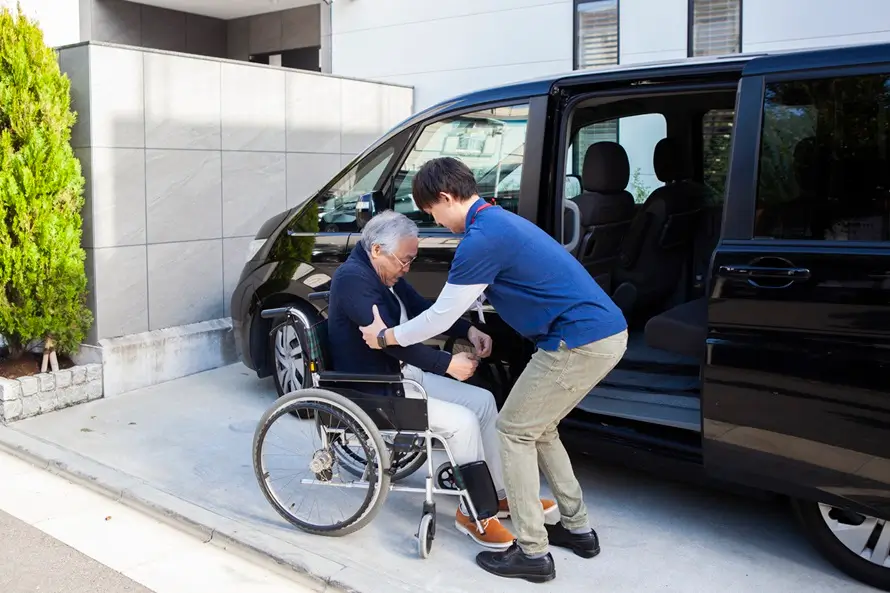How to Address Older Adult Transportation Challenges
Getting around often becomes harder as we age. Millions of older adults face daily transportation challenges—whether it’s physical immobility or lack of a driver’s license—that limit their independence and quality of life. The responsibility for older adult transportation often falls to family caregivers, but with the right strategy, providing mobility doesn’t have to feel overwhelming. Learn more about how aging affects older adults’ independence and how dedicated services can help.
How Mobility Changes Affect Older Adults
It’s no secret that older folks deal with a wide range of physical limitations, including joint pain, reduced flexibility, and even arthritis. These conditions make it significantly more difficult to get around, as traveling in cars (and getting out of them) can be uncomfortable or painful. Even short walks can feel like an insurmountable challenge as we age. And this is all before we consider chronic conditions that necessitate the use of wheelchairs and walkers. Unfortunately, the modern world just isn’t always accessible for older adults. That’s why mobility support services are so critical for many families.
Ways Physical Decline Impacts Safe Driving
Aging doesn’t just impact our physical mobility. Many effects of aging also influence our ability to be good, safe drivers. For one, slower reflexes mean longer response times to unexpected situations, like a car suddenly breaking in front of you. Too often, a delayed reaction is the difference between a car accident and a close call. Beyond this example, aging can also affect driving ability in the following ways:
- Increased neck stiffness may make checking blind spots difficult and even painful.
- Medication side effects might cause dizziness or impair judgment and coordination.
- Worsening vision makes night driving even more of a challenge, especially when there is a lot of glare from headlights.
Does Your Loved One Need Older Adult Transportation Services?
If your loved one is having a harder time making it to all their medical appointments, it may be time to consider investing in older adult transportation services. After all, aging in place shouldn’t mean giving up all kinds of travel! Here are some specific warning signs that your loved one could use some help:
- Difficulty reading road signs or seeing traffic signals
- Getting lost in areas that were once familiar
- Feeling nervous or overwhelmed while driving
- Frequent close calls or minor accidents
- Physical discomfort that affects the ability to operate a vehicle’s controls
How Professional Transportation Preserves Independence
Professional transportation services designed specifically for older adults allow older folks to maintain some of their independence while reducing their need to drive themselves. These services connect older adults with trained drivers who can assist with mobility devices, medical equipment, and other special requirements. Unlike public transportation, professional older adult transportation services offer door-to-door pickup and drop-off. This eliminates the challenge of walking to bus stops or navigating parking lots.
Many services are dedicated to accessible travel and allow things like advanced scheduling to ensure older adults can get where they need to go on time. Say goodbye to the uncertainty of ride-sharing apps or the physical demands of using public transit!
Other Ways to Support Accessible Travel
You have several options that can supplement professional older adult transportation services. While professional transport is a top choice, it may not be available at all hours of the day. If you want to make sure your loved one never misses an event or medical appointment, try using the following approaches to older adult transportation:
- Community Resources—Local community centers, religious organizations, and older adult centers often provide volunteer driver programs. These initiatives connect older adults with community volunteers who donate their time to help with transportation needs. While availability may be limited, these programs offer a personal touch and often cost less than commercial services.
- Family Support—Get a group of family members to create a transportation schedule that divides the responsibility among multiple people. This prevents any single person from becoming overwhelmed while ensuring consistent support for your older adult’s mobility needs.
- Technology Solutions—Some smartphone apps can help with older adult independence! For example, GPS devices and navigation apps with voice commands can help older adults who still drive by providing clear directions. This reduces the stress of driving in unfamiliar areas.
Creating a Sustainable Transportation Plan
The key to successful transportation planning for older adults lies in developing multiple options. Instead of relying on a single solution, consider combining professional services, family support, and community resources. Try this simple step-by-step guide to getting started:
- Assess Transportation Needs—Does your loved one have lots of medical appointments? How often will they need accessible travel services? Answering these questions will help you better understand your loved one’s needs.
- Research Your Options—Once you understand their needs, you can look at all your local options to find services that match them.
- Look at Your Budget—Be sure to research insurance coverage for medical transportation and compare the costs of different services.
- Put the Plan Into Action and Reassess—Give your older adult transportation plan a few weeks to work. After that, reassess it according to your loved one’s preferences and changing needs. Remember to stay flexible!
Driving Toward Increased Older Adult Independence
Transportation challenges don’t have to mean the end of independence for older adults. If you understand your options and plan ahead, you can ensure your loved one gets the help they need without taking away their autonomy. At SmithLife Homecare, we’re committed to helping older adults in Maryland and Washington, DC with exceptional care in the comfort of home. Contact us today to learn more about what we offer.

